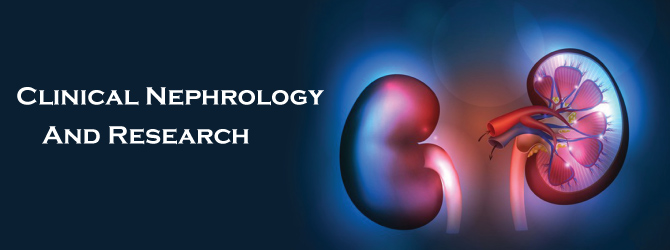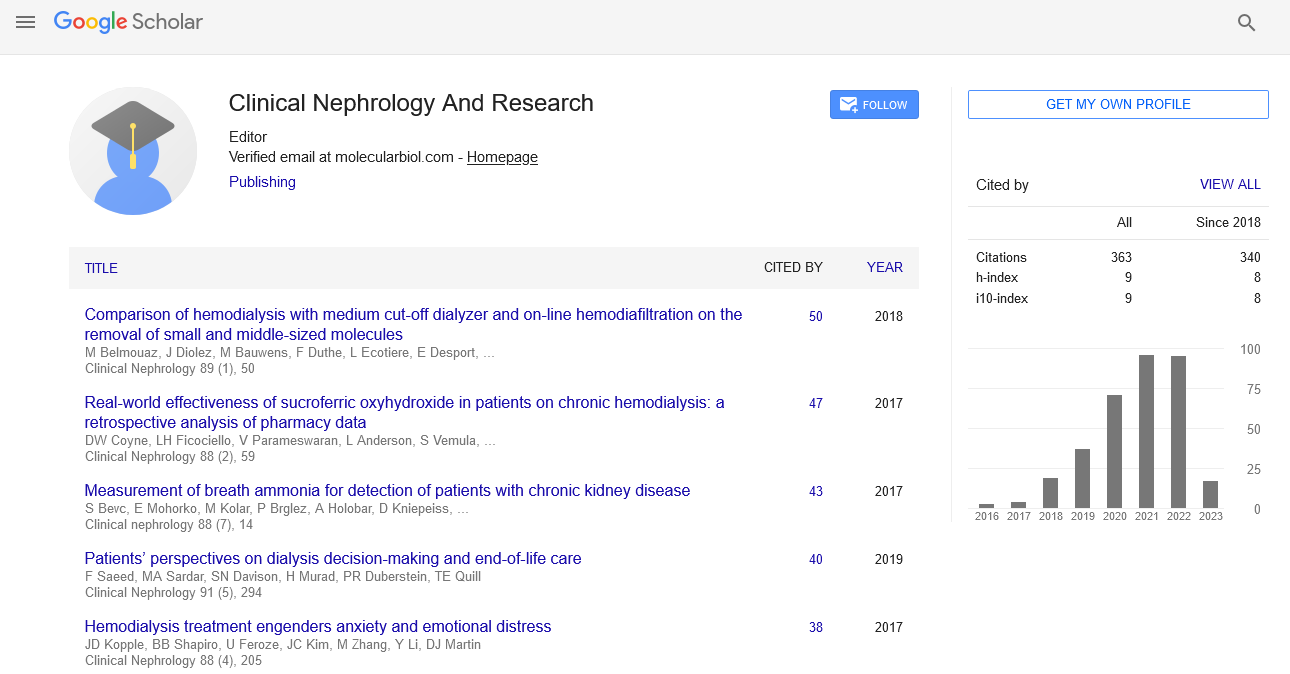
Sign up for email alert when new content gets added: Sign up
Robotic Assisted Partial Nephrectomy (RAPN): How can we guarantee renal function preservation?
5th International Conference on Urology and Renal Health
October 25, 2022 | Webinar
Aniruddha Chakravarti
The Royal Wolverhampton Hospitals NHS Trust, United Kingdom
Posters & Accepted Abstracts: Clin Nephrol Res
Abstract :
Introduction: Nephron-sparing surgery is favoured for T1 or suitable T2 renal tumours if surgically viable with the goal to preserve renal function while maintaining desired oncological outcomes. We review whether we can identify any peri-operative factors that can significantly impact post-operative renal function. Methods: A Retrospective analysis of all patients who underwent RAPN at a single tertiary referral centre since December 2015 until October 2021. Data analysed includes demographics and co-morbidities (age, ethnicity, BMI, hypertension, diabetes, solitary kidney) which are known to impact renal function post PN. Renal function pre-operatively and post-operatively >30 days, tumour characteristics (nephrometry score), intra-operative (warm ischaemic time, blood loss, operative time), and postoperative (length of stay, transfusion rate and Clavien Dindo (CD) complications. 3 groups were identified: Group 1= no acute kidney injury (AKI), Group 2 = AKI that resolved, Group 3= AKI that didn’t resolve. Group 1 and 2 were compared with Group 3. Results: 103 patients underwent RAPN. 19 were excluded (converted to radical nephrectomy n=3, insufficient renal function data =16). Group 1+2 (n=62) and Group 3 (n=22) were matched for age, gender, ethnicity, BMI, performance status and ASA grade, co-morbidities, intraoperative warm ischaemic time, blood loss, blood transfusion, operative time, and length of stay. Group 3 had a statistically higher nephrometry score (p-value =0.0064) and CD (p-value = 0.00046). Conclusion: Patients with higher nephrometry scores and complications are statistically more likely to have worse renal function outcomes. We did not demonstrate any significant pre- or post-operative factors in our single centre. The further multi-centre analysis would be needed to confirm this. Recent Publications 1. Ali, Stephen & Jackson, L. & James, G. & Balachandran, S. & Evans, C. & Grant, A. & Oglesby, K. & Bell, M. & Jordan, Laondrea & Cook, Timothy & Keightley, G. & Sandby-Thomas, M. & Whitfield, C. & Mahmood, Aqeel Shakir & Ling, A. & Kelkar, A. & Sharpe, P. & Verma, Deeksha & Akhtar, Rida & Williams, J.. (2014). Abstracts of the Royal College of Anaesthetists Annual Congress 2014: The National Museum, Cardiff, UK, May 15-16, 2014. British Journal of Anaesthesia. 113. 308P-316P. 10.1093/bja/aeu197. 2. Kommu, Sashi & James, Phillip & Smith, Paul & Tytler, Peter & Emara, Amr & Cartlidge, David & Somani, Bhaskar & Chakravarti, Aniruddha & Barber, Neil. (2011). EX VIVO PLATFORM FOR SKILL ACQUISITION IN LAPAROSCOPIC PYELOPLASTY ANASTOMOSIS USING THE DA VINCI ROBOTIC SYSTEM. Journal of Endourology. 25. A27-A27. 3. Kommu, Sashi & Somani, Bhaskar & James, Philip & Finnigan, Tom & Cartlidge, David & Hashim, Zafar & Chakravarti, Aniruddha. (2011). 1493 PERIPHERAL VISUAL CUE SUPPLEMENTED TARGET TASK FOCUS – ADVANCED EXERCISE REGIME FOR GAZE CONTROL IN LAPAROSCOPIC UROLOGICAL SURGERY. Journal of Urology - J UROL. 185. 10.1016/j.juro.2011.02.1451.




